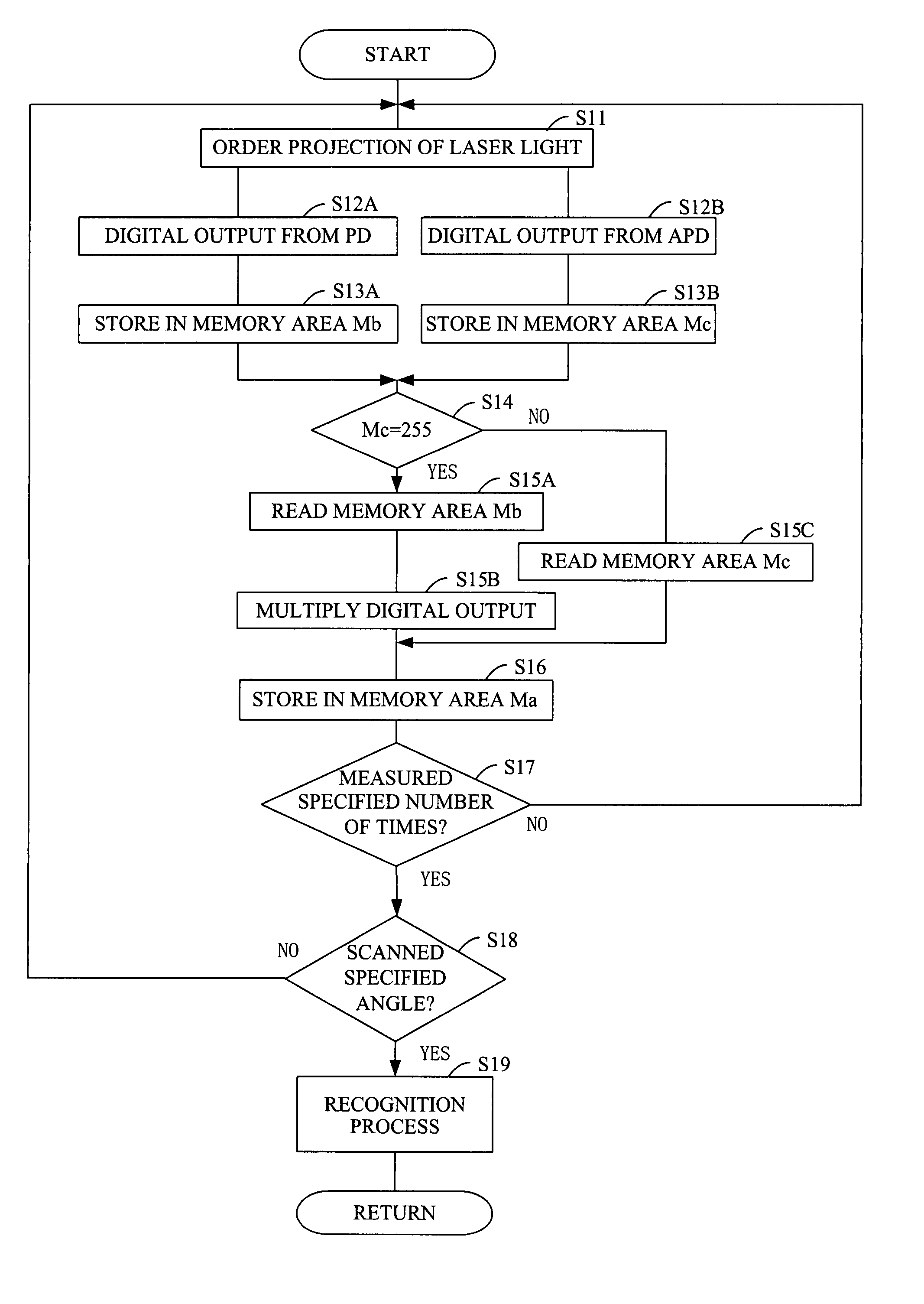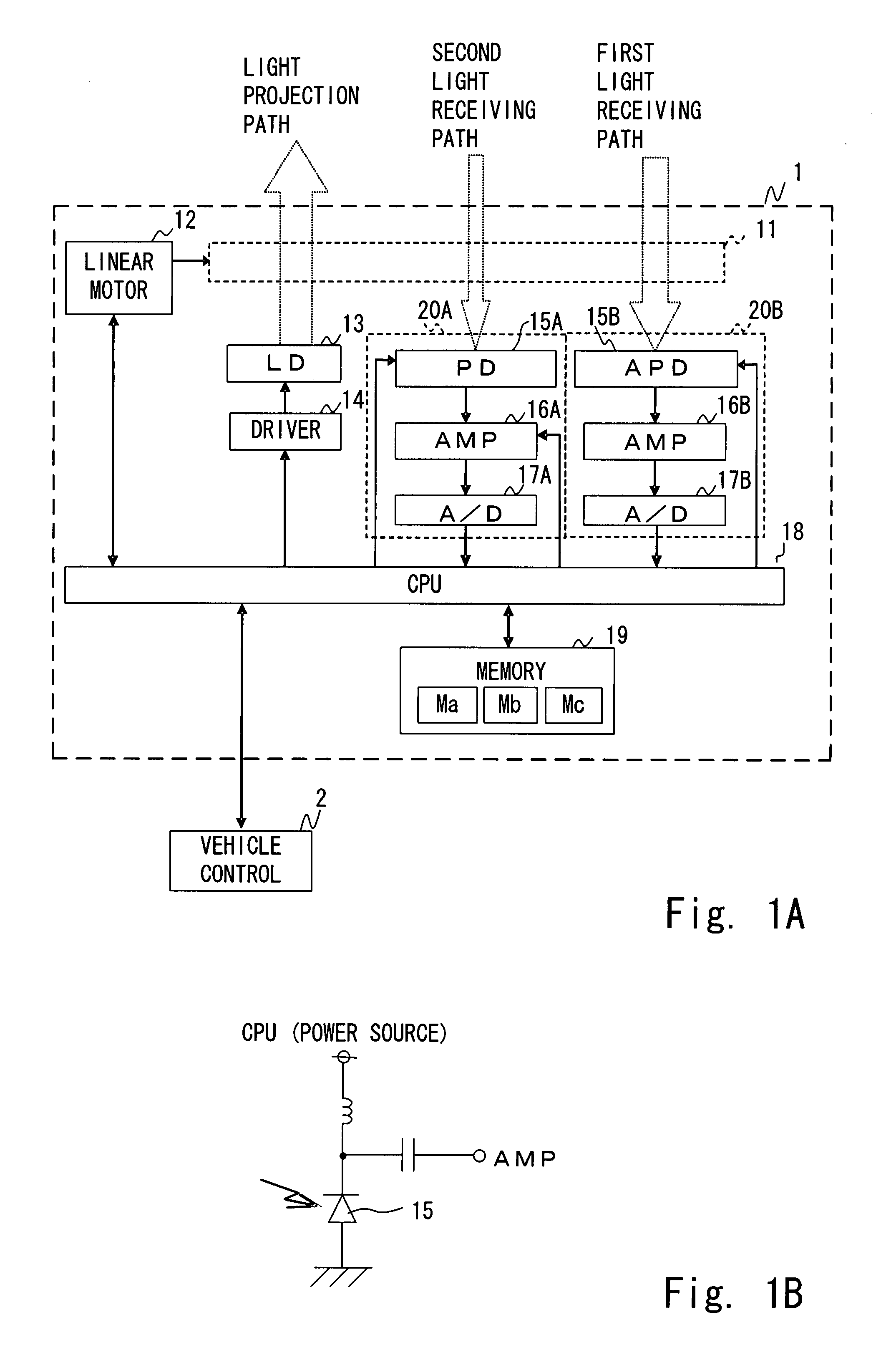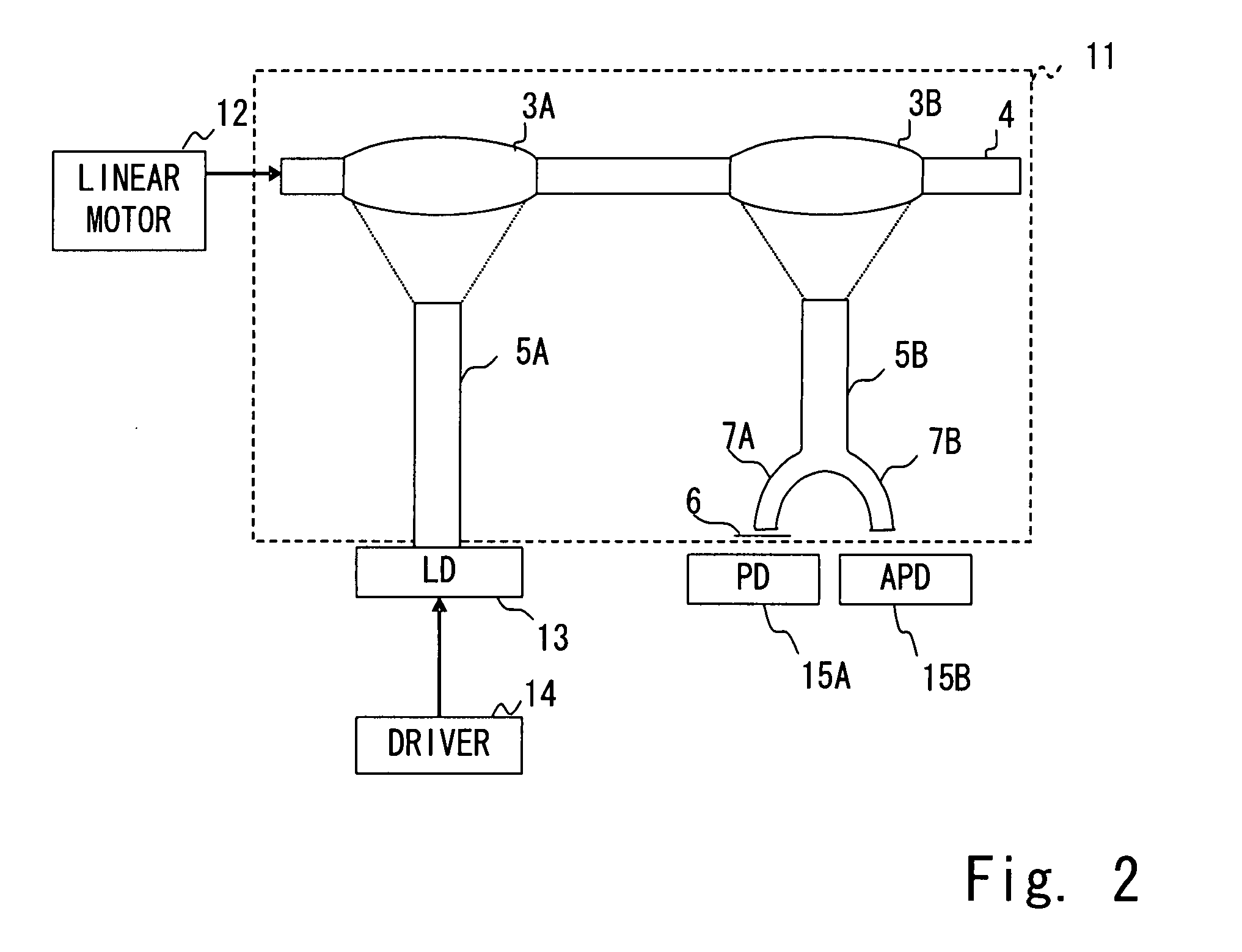Radar device
a technology of a radar and a detector is applied in the field of radar devices, which can solve the problems of limiting the detection of reflected light with a low brightness, the variety of reflectivity of objects and their distances is quite large, and the saturation of the measured value of the photodiode, etc., and achieves the effect of simple structure and high level of accuracy
- Summary
- Abstract
- Description
- Claims
- Application Information
AI Technical Summary
Benefits of technology
Problems solved by technology
Method used
Image
Examples
Embodiment Construction
[0035]The invention is described next with reference to drawings. FIG. 1A is a block diagram of a radar device 1 comprising an optical unit 11, a linear motor 12, a laser diode (LD) 13, a driver 14, light receiving circuits 20A and 20B, a CPU 18 and a memory 19.
[0036]The optical unit 11 has a light projecting path, a first light receiving path and a second light receiving path. The first and second light projecting paths serve to guide light flux from the direction of an object respectively to an avalanche photodiode (APD) 15B and a photodiode (PD) 15A.
[0037]As shown in detail in FIG. 2, the optical unit 11 is provided with a light projecting lens 3A, a light receiving lens 3B, a lens frame 4 that connects these lenses, a light guide 5A having a light projecting surface at the position of the focus of the light projecting lens 3A, another light guide 5B which is a branched light guide serving to branch received light flux evenly into its two branches 7A and 7B and having a light rec...
PUM
 Login to View More
Login to View More Abstract
Description
Claims
Application Information
 Login to View More
Login to View More - R&D
- Intellectual Property
- Life Sciences
- Materials
- Tech Scout
- Unparalleled Data Quality
- Higher Quality Content
- 60% Fewer Hallucinations
Browse by: Latest US Patents, China's latest patents, Technical Efficacy Thesaurus, Application Domain, Technology Topic, Popular Technical Reports.
© 2025 PatSnap. All rights reserved.Legal|Privacy policy|Modern Slavery Act Transparency Statement|Sitemap|About US| Contact US: help@patsnap.com



